Types of Tillage Implements Used in India - Primary & Secondary Tillage
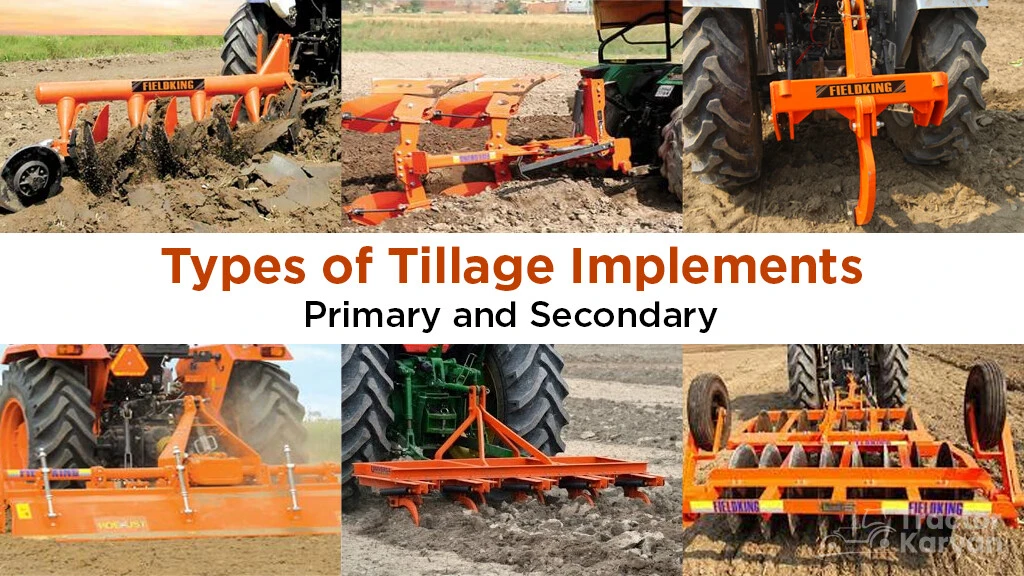
Table of Contents
Introduction
Tillage is an essential agricultural practice that involves the preparation of soil for cultivation. It plays a vital role in seedbed preparation, weed control, and nutrient management. Tillage implements are tools or machines used by farmers to carry out the process of tillage and involve both primary and secondary tillage implements.
In India, where agriculture is the backbone of the economy, various types of tillage implements are used for primary tillage and secondary tillage. There is a significant difference between primary and secondary tillage implements. When searching for the question of what primary tillage is, we get the answer that it involves implements that are used at the initial stage in the fields.
On the other hand, the secondary tillage definition states that it is used after the primary tillage. This blog will discuss the different types of primary and secondary tillage implements used in India, focusing on primary tillage and secondary tillage.
What is Primary Tillage Implements?
The primary tillage definition states that it is the initial step in soil preparation, which involves deep tillage to break up compacted soil, incorporate organic matter, and create a suitable seedbed.
The following are some of the primary tillage implements used in India:
Mould Board Plough

The Mould board plough or MB plough is one of the most common and traditional tillage implements used in India. It consists of a curved iron plate called the Mould board, which turns the soil over. The ploughshare, a sharp cutting edge, cuts through the soil while the Mould board inverts and pulverizes it. Mould board ploughs are suitable for breaking hardpan, burying crop residues, and incorporating organic matter into the soil.
The advanced version of mouldboard plough is the Hydraulic Reversible MB Plough. These ploughs use hydraulic system of the tractor to break the soil and bury crop residues. Moreover, they work in both forward and reverse direction to invert the soil in one pass and then invert it back again in the next pass. It consists of a main frame, a hitch for attaching it to a tractor, and one or more mouldboard blades.
Disc Plough
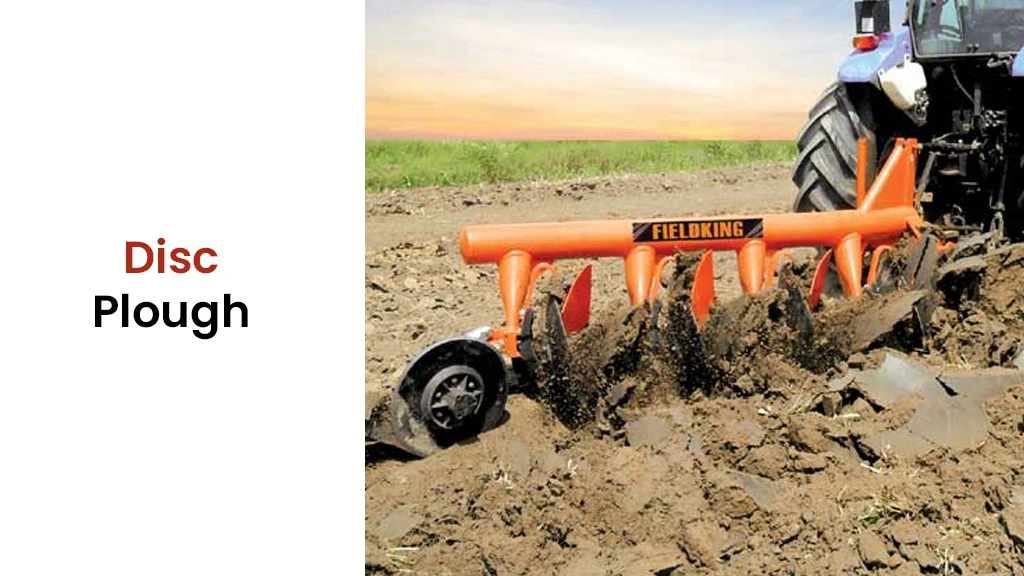
The Disc Plough, a significant primary tillage implement in India, plays a vital role in agricultural practices. Comprising a sequence of concave metal discs aligned in a row, this implements cuts effectively and flips the soil, resembling the functionality of the Mould board plough. Its utility shines prominently in challenging terrains with rocky or stony soils, effortlessly overcoming obstacles encountered in the process.
Additionally, disc ploughs excel in their ability to achieve superior soil inversion, surpassing the capabilities of Mould board ploughs. This characteristic is instrumental in enhancing soil quality, promoting optimal crop growth, and ultimately contributing to the agricultural productivity of the region.
Chisel Plough
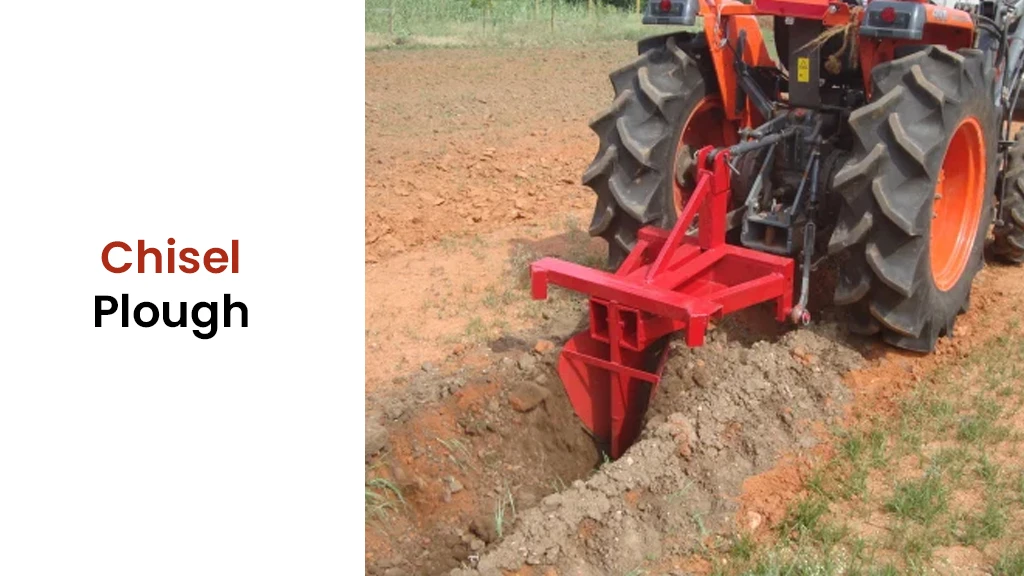
Chisel Ploughs are widely used for primary tillage in India, especially in regions with heavy clay soils. They consist of multiple tines or shanks that penetrate the soil without turning it over completely. Chisel ploughs help break up compacted soil layers, improve aeration, and enhance water infiltration. They are commonly used for soil loosening and deep tillage.
What is Secondary Tillage Implements?
As we have already discussed the difference between primary and secondary tillage implements, we will now see secondary tillage. Secondary tillage follows primary tillage and involves finer operations to prepare the seedbed, control weeds, and enhance soil structure.
The following are some of the secondary tillage implements used in India:
Rotavator
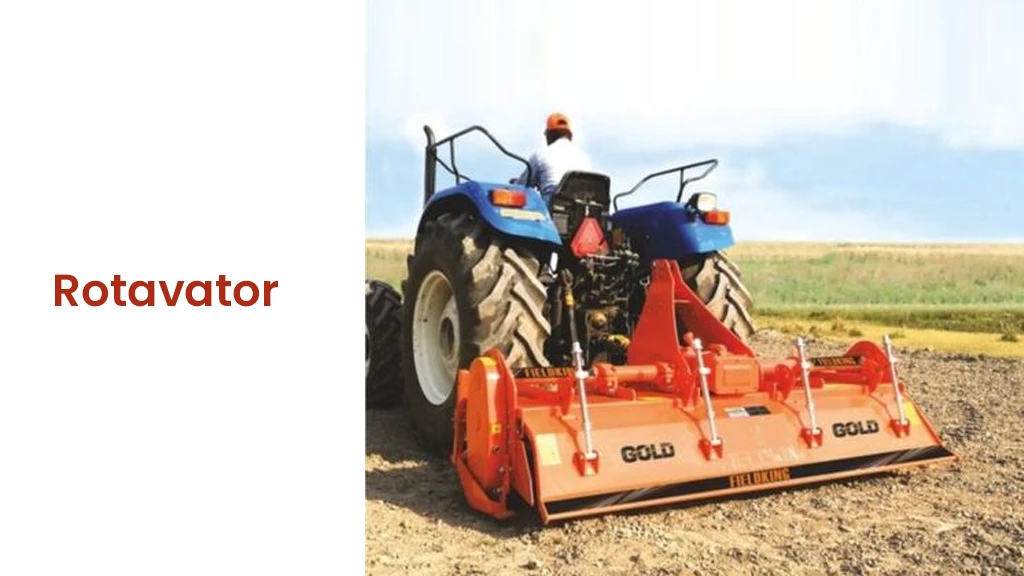
Rotary tillers, also known as rotavators, are mechanized implements used for primary tillage. They consist of a power-driven rotor with blades or tines that break up the soil. Rotary tillers are highly efficient in seedbed preparation and weed control. They can pulverize the soil, mix organic matter, and create a fine tilth. Rotary tillers are particularly suitable for dryland farming and horticultural crops.
Cultivator
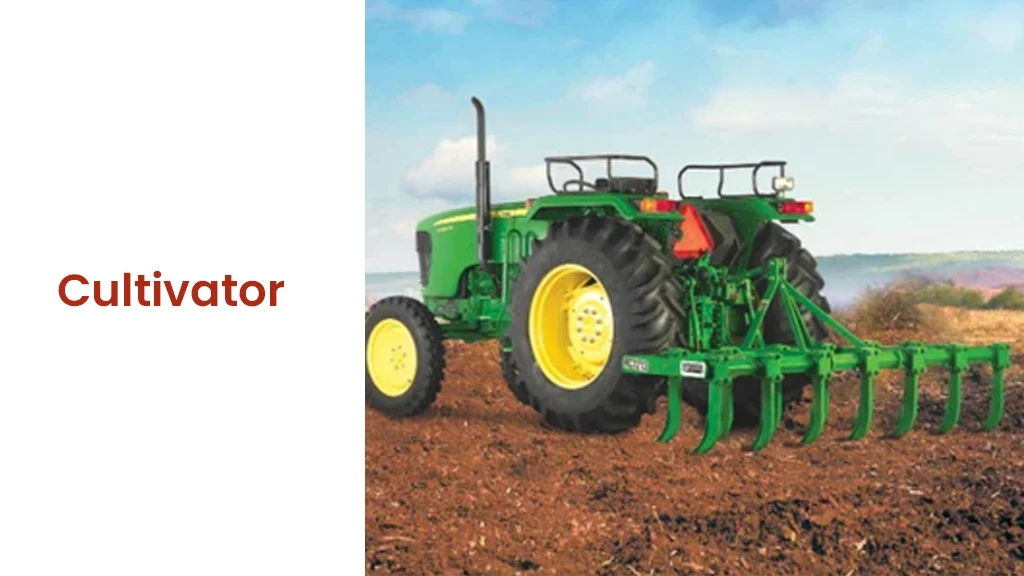
Cultivator implements are widely utilized as essential secondary tillage implements throughout India. These implements are designed with a multitude of rigid or spring-loaded tines or shanks, which effectively loosen the soil, eradicate weeds, and establish a finely prepared seedbed.
Cultivators come in diverse sizes and configurations, catering to a range of agricultural needs, from handheld tools for small-scale farming to larger tractor-mounted implements for extensive cultivation. Their versatility is commendable, as they prove to be adaptable and proficient across various soil types, ensuring optimal soil preparation and enhancing crop productivity.
Harrow
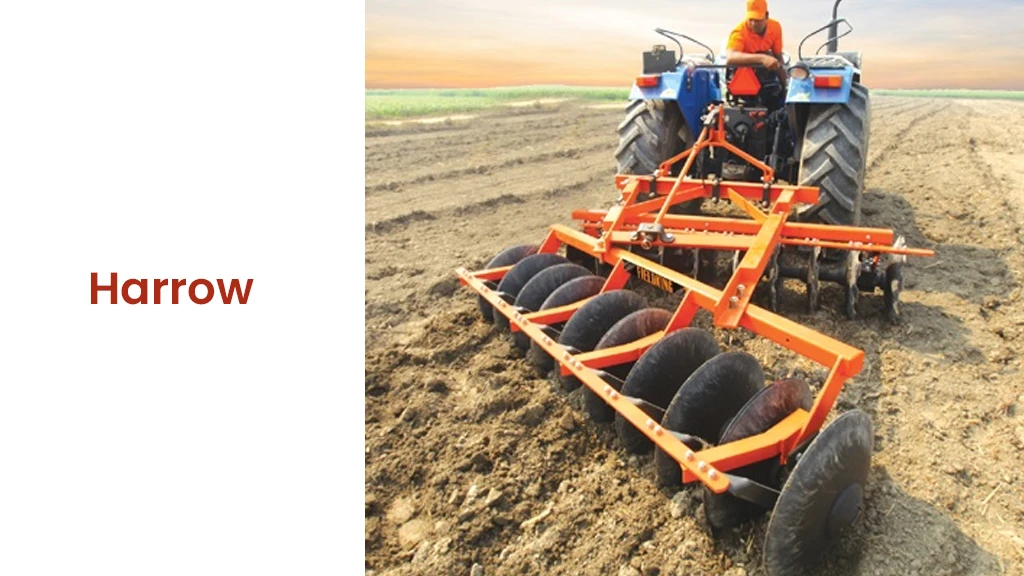
Harrows are essential secondary tillage implements used in India for seedbed preparation and weed control. They consist of a series of sharp metal teeth or discs attached to a frame. Harrows break up clods, level the soil surface, and bury weed seeds. They are particularly effective in pulverizing soil and incorporating crop residues. Harrows come in different types, such as disc harrows and tine harrows, to suit specific tillage needs.
Harrows are of two types, viz., Power Harrow and Disc Harrow. Both the harrows are used to till the soil, but power harrow uses tractor’s PTO power whereas disc harrow uses drawbar power of the tractor.
Conclusion
Tillage is an integral part of agricultural practices in India, and a wide range of implements are used for primary and secondary tillage operations. Primary tillage implements such as mould board ploughs, disc ploughs, and chisel ploughs are employed for deep soil preparation and seedbed creation.
On the other hand, secondary tillage implements like rotary tillers, cultivators, and harrows, are used for finer operations like weed control, seedbed refinement, and seed placement. The availability and proper use of these tillage implements contribute to efficient and sustainable agriculture in India, improving soil fertility, crop productivity, and overall farm profitability.


सम्बंधित ब्लॉग्स















